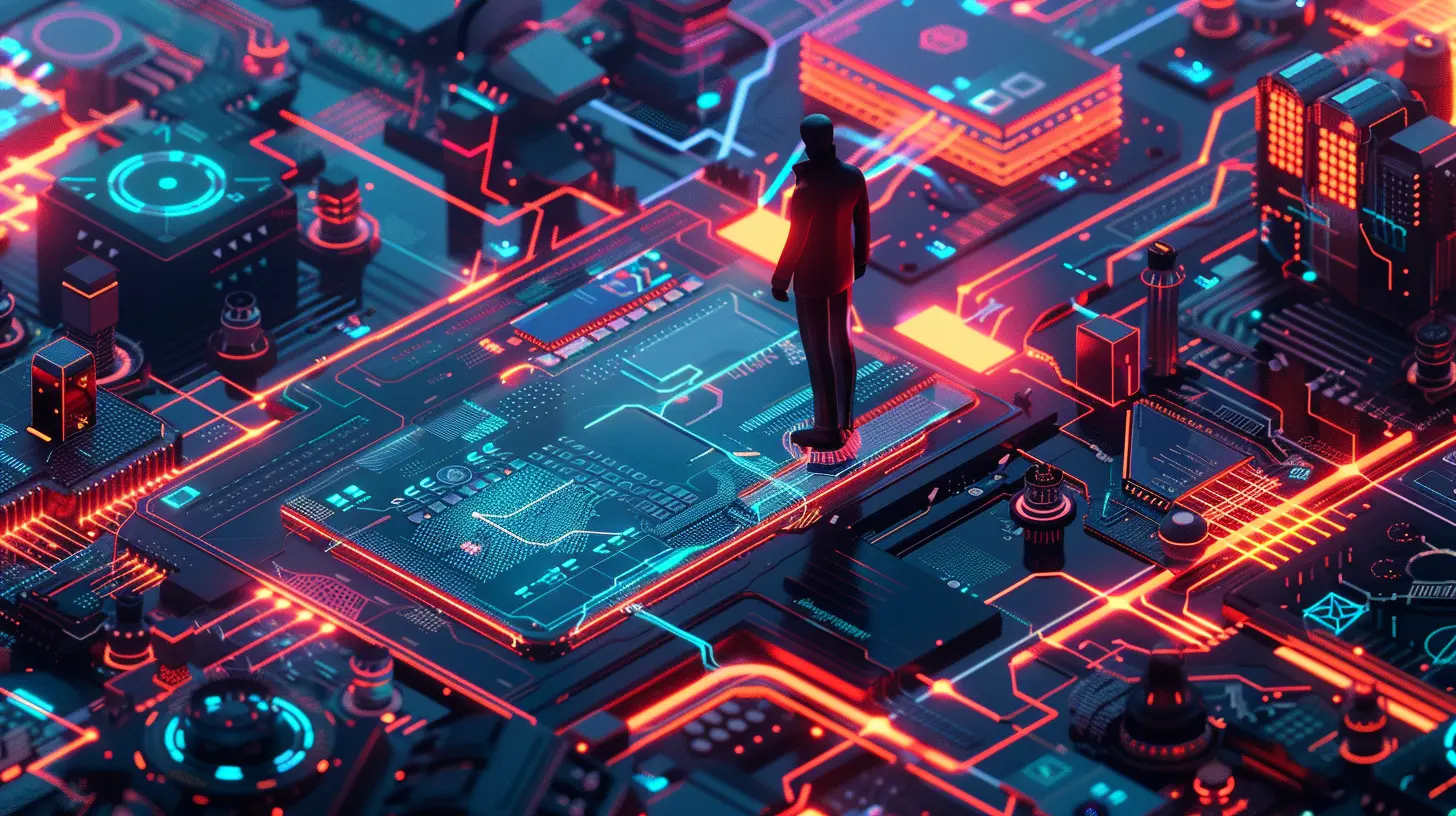Cybersecurity Myths That Could Put Your Devices at Risk
29 October 2025
When was the last time you updated your antivirus software? Or changed your passwords? If you're like most people, it's probably been a while—and that's okay. But here's the thing: what we think we know about cybersecurity is often riddled with myths and misconceptions. These myths may seem harmless, but they can actually leave you and your devices wide open to all kinds of threats.
So today, we’re diving deep into the world of cybersecurity myths that could put your devices at risk. Whether you’re a casual internet surfer or a full-blown techie, chances are you’ve fallen for at least one of these myths at some point. Don’t worry, though—we’re here to bust them.
Let’s get into it.
Myth #1: "I'm Not Important Enough to Be Hacked"
Let’s kick things off with one of the most dangerous and common beliefs out there.Truth bomb: Hackers don’t care who you are.
They’re not always targeting government agencies or big corporations. Often, they’re just looking for vulnerabilities. It’s like a burglar testing random doors to see which one is unlocked. If you’re connected to the internet, you’re a potential target. Cybercriminals might want your personal information, banking details, or even just to use your device to launch attacks on others. Scary, right?
So yes—even your sleepy laptop or barely-used smartphone is fair game.
Myth #2: "Strong Passwords Alone Will Keep Me Safe"
Alright, let’s talk passwords. Sure, having a strong password is essential, no question about that. But thinking that just having a strong password is the golden shield? Not quite.Hackers have gotten smarter. They use tactics like phishing, keylogging, and brute force attacks to snag credentials. Even the strongest passwords can be compromised if you're not cautious.
So, what should you do?
Use two-factor authentication (2FA), always. It’s like adding a second lock to your door. Even if someone grabs your password, they still need that extra verification step to get in.
Myth #3: "Antivirus Software is Enough"
Let’s be real—antivirus software is good. It acts like your first line of defense. But it’s not a magic shield that wards off all evil. Not even close.Nowadays, cyber threats have evolved way past what traditional antivirus tools were built to handle. Malware is sneakier. Phishing scams are more sophisticated. Spyware can be hidden in what looks like harmless files.
Think of antivirus as a seatbelt. It’s vital, but you still need airbags, good brakes, and safe driving habits to REALLY stay safe on the road.
Myth #4: "Macs Don't Get Viruses"
This one’s been floating around for years, and it’s time we squash it.Yes, Apple computers used to be less targeted. Mainly because there were fewer of them, so hackers didn’t bother. But times have changed. Macs have grown in popularity, and so have Mac-based attacks.
Reality check: Macs are vulnerable too.
There are Mac-specific malware strains and phishing scams that don’t care what kind of logo your device has. So if you’re a Mac user, don’t get too comfy. Keep your software updated and use cybersecurity tools just like Windows users do.
Myth #5: "My Phone Is Safe—I Only Use Apps from the App Store"
App stores are safer than downloading random files off the web, sure. But they’re not hacker-proof.Bad apps do slip through the cracks. Some look legit, get thousands of downloads, and then—bam—they start stealing data or spamming ads. Even good apps may request way more permissions than they need. Ever notice a flashlight app asking for access to your contacts or location? 🚩 Red flag!
Always check app reviews, developer info, and permissions before downloading. And don’t forget—keeping your OS and apps up-to-date helps patch known security holes.
Myth #6: "Public Wi-Fi is Fine if I'm Just Browsing"
Raise your hand if you’ve ever connected to a random café Wi-Fi to check your emails. Thought so. We've all been there.But here’s the kicker—public Wi-Fi is a goldmine for hackers. It’s like a digital eavesdropping party, and your data is the guest of honor.
Even just browsing can expose you. If the website doesn’t use HTTPS, your information can be intercepted. And don't even get us started on online shopping or banking on public Wi-Fi.
Pro tip? Always use a VPN when you're using an unsecured connection. It creates a secure tunnel for your data, like whispering in a crowded room instead of shouting.
Myth #7: "Incognito Mode Keeps Me Anonymous"
Oh, if only it were that simple!Incognito or private browsing mode just means your browser doesn't save your history, cookies, or form data. But your ISP, employer, and the websites you visit? They can still see you. So can hackers using network tools.
Incognito mode is great for hiding browsing activity from people who use your device—but it won’t protect you from external threats.
Myth #8: "Software Updates Take Too Long—I’ll Do It Later"
We get it. Those update reminders always pop up at the worst time.But postponing updates is like refusing to patch a leak in your boat. Sooner or later, it’s gonna sink.
Software updates fix known vulnerabilities—holes that hackers love to exploit. The longer you wait, the longer your devices are exposed. Whether it’s your smartphone, laptop, router, or even that smart thermostat, regular updates are a non-negotiable cybersecurity habit.
Myth #9: "I Can Spot a Phishing Email a Mile Away"
You might be great at spotting typos, weird URLs, and shady senders. But here’s the deal: phishing scams have gotten really, really good.Some mimic real company emails almost perfectly. They use logos, real-looking email addresses, and even personalized info. One click on a link or one downloaded attachment, and your system could be compromised.
When in doubt, don’t click. Instead, log in to your account via the official website—not a link in your email. Better safe than sorry.
Myth #10: "I Don't Need Backup—My Stuff Is in the Cloud"
Cloud storage is fantastic. But it’s not a substitute for a true backup strategy.What happens if your cloud account gets hacked? Or files get accidentally deleted? Or the service goes down? You need a local backup too. Ideally, one that’s offline and protected.
Following the 3-2-1 rule is smart:
- Keep 3 total copies of your data
- Store 2 copies on different local devices
- Keep 1 copy offsite, like in the cloud
That way, you’re covered no matter what.
Myth #11: "Cybersecurity Is Only for Tech Experts"
This one’s totally false—and probably the biggest hurdle to staying safe online.Cybersecurity isn’t just for IT folks or nerds in hoodies typing code in a dark room. It’s for everyone. If you use a smartphone, computer, or smart device, you need basic cyber hygiene.
And guess what? Most good security practices are simple! Things like:
- Using unique passwords
- Turning on 2FA
- Updating your devices
- Avoiding sketchy links
You don’t need a degree in computer science—you just need good habits.
Myth #12: "Only Adults Need to Worry About Online Security"
Kids and teens are often even more at risk. Why? Because they spend a ton of time online and might not recognize the red flags. From gaming scams to social media phishing attempts, there’s a lot that can go wrong.Parents—teach your kids online safety the same way you'd teach them to look both ways before crossing the street. And use parental controls and monitoring tools to help keep them safe.
Myth #13: “Cybersecurity Is Just About Preventing Hacking”
Cybersecurity is so much more than just avoiding being “hacked.” It’s about protecting your privacy, your identity, your finances, and even your mental peace. It's about making informed choices and creating habits that keep you—and the people around you—safe.Because in a digital world, security equals freedom. The more secure you are, the more confidently you can live, work, and play online.
Final Thoughts: Don’t Fall for the Myths
If there’s one thing we hope you take away from this, it’s this: cybersecurity isn’t optional. And believing in these myths can make you an easy target in a world where digital threats are always evolving.But the good news? You’re not powerless. You don’t need to be a cybersecurity pro to stay protected. Just start by questioning what you think you know, building safer habits, and staying informed.
Because, honestly, the most dangerous myth of all is thinking it won’t happen to you.
Stay safe out there.
all images in this post were generated using AI tools
Category:
Cyber ThreatsAuthor:

Kira Sanders
Discussion
rate this article
1 comments
Mallory Larsen
This article sheds light on crucial cybersecurity myths that many overlook. It's essential to recognize the truth behind these misconceptions to better protect our devices and personal data. Thank you for illuminating these often-ignored issues. Staying informed is our best defense in an increasingly digital world. Great read!
October 29, 2025 at 11:41 AM


